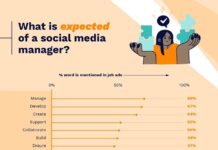===== This article originally appeared in the November issue of The Social Media Monthly, the first print magazine focused on social media. We are sharing it here with permission from Bob Fine. Look for more articles and extended case studies from The Realtime Report in future editions! =====
At 6 am on July 26, 2011, the Seattle Police Department began posting summaries of dispatch calls that it received to its @SeattlePD Twitter account—and lost several hundred followers in the process. The steady stream of tweets began without any warning or explanation and continued without interruption for twelve hours. By 2 o’clock in the afternoon, nearly 300 of the account’s 9,000+ Twitter followers had unfollowed the account.
The controversy around the Seattle PD Twitter campaign, which was widely criticized by local news outlets and blogs, stands in sharp contrast to the outcome of a similar campaign conducted by the Greater Manchester Police. On October 13, 2010, Manchester’s police force tweeted out the contents of its dispatch calls, with a total of 3,205 tweets sent in twenty-four hours. The results? 11,000 new followers on Twitter, a hashtag that was trending on Twitter worldwide, and widespread acclaim from the public and the press.
The difference in the results from two such similar campaigns underscores one of the most basic best practices in managing a social media strategy—the importance of two-way communication. Ironically, transitioning from a broadcast communications model to a two-way communications strategy is also one of the most difficult transitions for many organizations to make. Two months after its controversial Twitter campaign, the Seattle Police Department still hasn’t achieved that milestone.
The Bullhorn vs. the Conversation
Both campaigns had a similar goal: to raise public awareness about fighting crime. The Seattle PD timed its campaign with the National Night Out Against Crime, and wanted to show the public how their involvement is crucial to fighting crime. The timing of the Manchester Police Force’s initiative was driven by a budget crisis: faced with cuts of up to £7 million, Chief Constable Peter Fahy needed to quickly raise awareness and educate the public about how its tax dollars were being spent to fight a broad range of social issues and crime.
The Seattle PD Twitter campaign lasted twelve hours, posting an average of 40 tweets per hour for a total of 478 police responses. But the campaign began without any explanation for the increased volume of messages on Twitter, surprising and irritating many followers. Only that afternoon did the Seattle PD post an explanation for the flurry of tweets on its blog: “The point of “tweeting” police events is this: while crime fighting is the business of the police department, we can’t do it alone.” wrote Sgt. Sean Whitcomb. “We rely on Seattle residents to report crime and suspicious behavior. The majority of the incidents that we handle were reported to us. That means that the majority of the incidents that we are “tweeting” were brought to our attention by the public.”
Had the Department explained the campaign to the public, and had it responded to the tweets it received during the course of the day, it might have been better received. One local blogger criticized the Seattle PD for using Twitter as a “one-way communication tool,” without responding to those who asked questions about the rush of dispatch tweets. Linda Thomas, who also broadcasts for local station KIRO-FM, accuses the @SeattlePD account of being “a noisy uncle at the dinner table who was only talking about himself – in incoherent sentences at that – and refusing to acknowledge that there are others in the room.”
The Greater Manchester Police campaign had a far different outcome because it was based on an understanding that Twitter is a two-way communication medium. The campaign was highly publicized before it began, and used different Twitter accounts that it had established specifically for the campaign. The force’s main Twitter account, @gmpolice, responds to questions and inquiries from the public, and helped educate people about the #GMP24 campaign as it was happening. At the end of the twenty-four-hour period, Greater Manchester Police had sent 3,205 tweets from three different Twitter accounts (to circumvent Twitter’s API limits), and tagged all of its tweets with the hashtag #gmp24.
The results? The force’s main Twitter account gained 11,000 followers over the course of the twenty-four hours. The campaign hashtag #gmp24 was a worldwide trending topic on Twitter, based not only on the volume of tweets generated by the force’s three Twitter accounts, but by the engagement from followers and supporters, and by the buzz created around the campaign.
Lacking the Resources to Engage
Seattle’s Sgt. Whitcomb confirms that, until the department can obtain the resources needed, the @SeattlePD Twitter account continues to be primarily a one-way communications tool, and many of the questions posted to the Seattle PD via Facebook and Twitter remain unanswered. He is hopeful that, as the economy improves, he will see more resources in social media and communications so that they will have the “ability to have two-way communication with the public through social media.”
But he’s not waiting. He sees platforms like Twitter as a “communications opportunity that can’t be ignored.” And the Seattle PD is continuing to find innovative ways of using Twitter as a platform that makes a difference to its core crime-fighting mission.
Tweets That Get Tough on Crime in Seattle
For instance, the Seattle Police Department runs a dedicated Twitter account, @GetYourCarBack, that tweets out information about stolen cars. The goal, Sgt. Whitcomb explains, is “to let thieves know that their stolen rides just got hotter.” Once a vehicle is confirmed stolen in the Seattle area, all information about the car is posted to Twitter, along with instructions for the public to call 911 if the vehicle is spotted. Within four days of launching this social media effort in December of 2010, the first stolen car was recovered thanks to a 911 call from a local woman who had seen information about the car on Twitter.
The Department has also recently established an initiative called “Tweetalong Tuesdays,” designed to let followers shadow the action of a police officer in the Seattle area for a day. “Ever wanted to go on a police ride along but never had the time? Now you can – virtually.” Taking place on the second Tuesday of every month, @SeattlePD’s Twitter followers can keep up with the action and send their own comments or questions using the hashtags #seattlepd and #tweetalong.
According to Sgt. Whitcomb, the Seattle PD is currently working on posting 911 calls full-time from a separate Twitter account. These posts will be automated, rather than relying on a live person to post each call, with a system designed to filter out calls that contain sensitive or personal information. But his dream is to also have the resources to be responsive. Whitcomb would like to be able respond to emergency tweets with the same level of urgency as the Department currently responds to a 911 call.
In Manchester, Twitter Walks the Beat
While Seattle operates its social media programs with limited resources and support, the highly visible success of Greater Manchester’s October 2010 #GMP24 campaign helped it to demonstrate “the power and impact of social media.” As a result, says Kevin Hoy, web manager at the Corporate Communications Branch of the Greater Manchester Police, social media is now an integral part of the team’s daily communications program.
As a direct result of public demand following the #GMP24 campaign, the Manchester Police introduced Twitter accounts for its community police officers. The pioneer was Community Support Officer @GMPDidsbury, who tweets information about local events, crime and other items of interest to the residents and business of Didsbury. The public can contact him directly through Twitter, and this initial effort saw “a huge amount of success.” The program was then rolled out across the city, with over 91% of Manchester’s neighborhood policing teams now on Twitter and engaging with local communities.
Doing More—While Spending Less
After the success of #GMP24, all of the force’s communications activity now includes a social media component, according to Kevin Hoy. When Manchester brought back its traditional “Drunken Disorderly Inn” Christmas campaign in 2010, the campaign was run exclusively online, with a website and social media support, rather than the traditional print and press campaigns of the past.
The campaign is designed to spread awareness and prevent alcohol-related violent crime during the holidays. The “Drunken Disorderly Inn” web site was designed to look like a site for a real hotel (a prison), with a booking process (showing “guests” being taken into custody), accommodations (a prison cell), and more. The campaign was fully supported by the @gmpolice twitter account, and the public could participate by uploading their photos, putting themselves “behind bars” and sharing the images on Facebook and Twitter. The response was “fantastic” with tons of comments via Twitter and thousands of people uploading and sharing their photos on social media platforms.
This shift from a print campaign to a web-based, social media-supported campaign, dramatically lowered the hard costs of the campaign from £7,000 to just £12.
Using Social Media to Organize Against the Riots
Thanks primarily to its consistent Twitter presence, @gmpolice has been able to accomplish its goal of becoming “the trusted voice in Greater Manchester.” In addition to responding to tweets and engaging in conversations, the force purposefully chose a more casual, though still professional, tone for its tweeting in an attempt to avoid “corporate language” and be more approachable to followers. According to Kevin Hoy, the growing authority of the force’s Twitter account “has been a huge benefit operationally, when we have used Twitter to immediately update the public about developing incidents and been able to direct appeals for information at our followers.”
This investment paid off during the recent riots. When the UK riots began in early August of this year, @gmpolice follower numbers swelled to over 100,000, and the force used its Twitter, Facebook and YouTube accounts to calm a nervous public, and to keep the community informed by responding to questions and addressing misinformation that was spreading online.
This outreach quickly became a two-way channel, with the police force responding to questions from the public, and encouraging followers to send photos, videos and any information about looters to the police via online channels. Public response was strong, and Kevin Hoy’s social media team worked closely with the intelligence team to look for useful information, both during and after the riots. The team created a ‘Most Wanted’ Flicker account, with CCTV images of rioters, and shared the images to Twitter and Facebook. Those who were charged and convicted of disorder were “named and shamed” on Twitter, showing the public that its help was leading to results.
Sky News, the BBC, and Tweetdeck
Realtime and social media tools like Twitter have helped both the Seattle and the Greater Manchester police departments with their communications to the general public—and have also been effective tools for managing communications with members of the press. Instead of fielding individual calls from numerous press outlets each time a major police event takes place, Seattle PD’s communications team now tweets out when and where information will be released, and posts the information on their blog as soon as it is available.
In Manchester, according to Kevin Hoy, social media has become indispensable. “Our Press Office now monitor Tweet Deck alongside Sky News and BBC News as part of their daily routine.”


